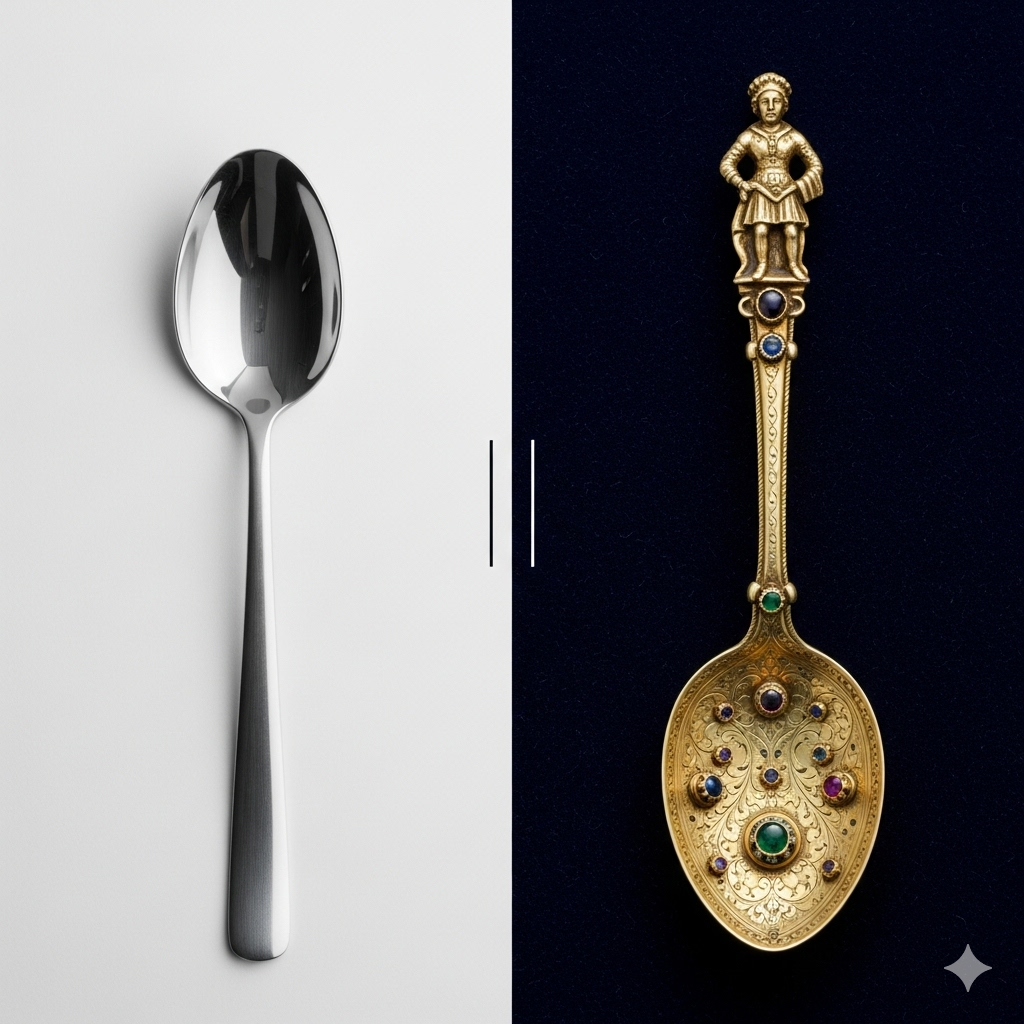The world we inhabit today is a product of centuries of relentless evolution, where innovation, cultural shifts, and societal values have continually reshaped every aspect of our lives. The video you uploaded, titled “Things 500 Years Ago And Now,” offers a compelling and concise look at this transformation by comparing familiar objects and concepts from the present day to their counterparts from the 16th century. This simple juxtaposition—a modern spoon next to a jeweled one from the past, a contemporary hairstyle versus a meticulously braided one, a functional bed against a towering, carved four-poster—serves as a powerful metaphor for the profound changes that have occurred in human history, demonstrating how our priorities have shifted from ornate symbolism to streamlined functionality, from rigid tradition to individual expression. It is an exploration not just of how things look different, but of the fundamental ways in which human life has been re-imagined and re-engineered over the course of half a millennium.
At the heart of this transformation is the story of design and utility. Take the spoon, for instance. The modern spoon, a sleek, minimalist utensil, is a testament to the industrial age. It is designed for mass production, ease of use, and hygienic cleaning. Its beauty lies in its simplicity and efficiency. In contrast, the spoon from 500 years ago is a work of art. It is embellished with intricate carvings, precious metals, and decorative jewels, its value determined not by its function but by its craftsmanship and the status of its owner. This contrast reveals a shift in values: from a society where objects were symbols of wealth and power, to one where they are tools for everyday convenience. The spoon’s evolution mirrors the larger societal movement from an aristocratic, stratified world to a more egalitarian and practical one, where even the simplest item is designed for the masses.
This theme is echoed in the comparison of hairstyles. The “now” hairstyle for a boy is a casual, trendy cut, a symbol of personal style and fleeting fashion. It is an expression of individuality, a choice made by the person wearing it. The hairstyle from 500 years ago, however, is a rigid, complex arrangement of braids and curls, likely worn by a person of high social standing. It is not about personal choice but about conformity to social codes and a visible declaration of one’s place in the hierarchy. This difference speaks to the liberation of the individual. In a society governed by strict social order, one’s appearance was a uniform, a coded message about who they were and where they belonged. Today, hair is a canvas for self-expression, reflecting a world where personal freedom and identity are celebrated.
The evolution of furniture, specifically the bed and chairs, provides another poignant example of this historical shift. The modern bed, a simple wooden frame with a comfortable mattress, is designed for comfort and sleep. It is a private space of rest and relaxation. The bed from 500 years ago is a majestic, heavily carved piece of furniture, often with a canopy and intricate decorations. These beds were not merely for sleeping; they were status symbols, and often served as a stage for receiving visitors and conducting business. They were a focal point of the household, a public declaration of wealth and power. Similarly, the modern chair is a simple, functional object designed for sitting, its primary purpose to support the human body. The chairs from 500 years ago are elaborate, throne-like structures, each a unique work of art and a testament to the owner’s status. These objects were not merely for comfort; they were imbued with social meaning, marking a person’s importance. This transformation from ornate, symbolic objects to streamlined, functional ones highlights a move away from public displays of wealth and toward private comfort and efficiency.
Perhaps the most dramatic change in the video is the contrast between the electric switch now and its precursor 500 years ago. The modern electric switch is a simple, inconspicuous button—a symbol of a world powered by unseen energy. It represents an era of instant gratification and seamless technology. The “500 years ago” image, a rudimentary and exposed electrical apparatus, is a powerful reminder that the modern convenience of electricity is a very recent invention. It shows the raw, mechanical nature of early technology, where function was not hidden but exposed, and the act of engaging with it required a more direct, physical interaction. The electric switch is not just a technological leap; it is a conceptual one, representing the transition from a world of manual labor and candlelight to one of automation and light on demand.
The dresses shown in the video also tell a story of societal change. The modern woman’s dress, a simple and elegant cocktail dress, is practical, comfortable, and a reflection of contemporary fashion trends. It allows for freedom of movement and a wide range of personal expression. The dress from 500 years ago is a masterpiece of historical costume, a heavy and restrictive garment made of rich fabrics and intricate lacework. This dress was not about comfort but about conforming to a rigid code of modesty and social standing. Its complex construction and voluminous shape were designed to highlight the wearer’s wealth and adherence to social norms, even at the expense of ease and comfort. This comparison underscores the shift in women’s roles and the newfound freedom they have in a more modern, less restrictive world.
In conclusion, the video serves as a powerful microcosm of human history. The evolution of these everyday objects—spoons, hairstyles, beds, chairs, and dresses—is not just about a change in aesthetics. It is a profound narrative about the shift from a world of rigid social hierarchies, public displays of wealth, and manual labor to one of individual expression, private comfort, and technological convenience. These simple comparisons force us to see how far we have come, and to appreciate the invisible forces of progress that have transformed not just what we own, but who we are. They are a reminder that the seemingly mundane objects around us are imbued with centuries of history, each one a silent witness to the journey of human civilization.

